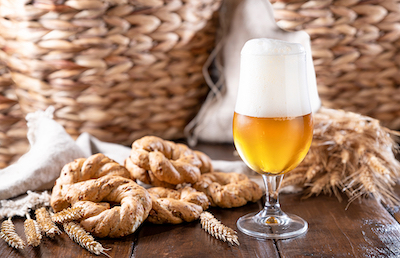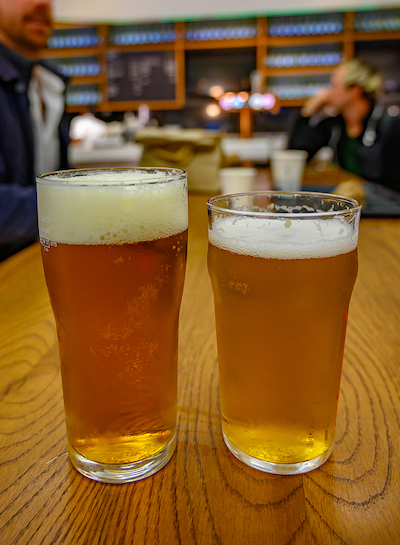Beer is one of the most popular beverages in the world. With its rich history and diverse flavours, it’s no wonder that beer enthusiasts are always eager to debate the best brews. One of the most heated debates in the world of beer revolves around light beer versus regular beer. For those who are not familiar with the differences between the two, this article will provide a comprehensive comparison, examining taste, nutritional content, brewing process, and other factors that may influence your decision when choosing between light beer and regular beer.
- What is Light Beer?
Light beer is a type of beer that is specifically formulated to have lower calorie and alcohol content compared to regular beers. Typically, light beers have an alcohol by volume (ABV) ranging between 2.5% and 4.2%, while regular beers usually have an ABV of 4% to 6%. These beers are designed to appeal to those who want to enjoy a beer with fewer calories and a milder taste.
- What is Regular Beer?
Regular beer refers to the full-bodied, traditional beer varieties with a standard ABV, calorie count, and flavour profile. There is a wide range of regular beer styles, including lagers, ales, stouts, and porters. Each type of regular beer offers a distinct flavour, aroma, and mouthfeel, catering to the diverse preferences of beer lovers worldwide.
- Taste
One of the most significant differences between light beer and regular beer is the taste. Light beers are generally milder in flavour, with a crisp and refreshing taste. They are often less hoppy and malty than their regular counterparts, which allows for easy drinking and a less bitter finish. Regular beers, on the other hand, offer a more robust flavour profile, with complex notes and a stronger hop or malt presence.
- Nutritional Content
Light beers are marketed as a healthier alternative to regular beers due to their lower calorie and carbohydrate content. A standard 12-ounce serving of light beer contains between 90 and 110 calories, while a regular beer typically ranges from 150 to 200 calories per serving. Additionally, light beers usually have fewer carbs – around 3 to 7 grams – whereas regular beers can have anywhere from 10 to 20 grams of carbohydrates per serving.
However, it is essential to note that the reduced calorie and carbohydrate content in light beers comes at the expense of flavour and alcohol content. If you are looking to moderate your caloric and carbohydrate intake without sacrificing the taste and experience of your beer, you may want to consider other alternatives, such as low-carb or low-alcohol beers.
- Brewing Process
The brewing process for light beer and regular beer is quite similar. Both types of beer involve mashing, boiling, fermenting, and conditioning. The primary difference lies in the ingredients and techniques used to reduce the calorie and alcohol content in light beers.
To produce a light beer, brewers typically use fewer malts and adjuncts like rice or corn, which provide fewer fermentable sugars for the yeast to convert into alcohol. Additionally, they may employ techniques like high-gravity brewing, where a more concentrated wort is created and then diluted with water to achieve the desired ABV and calorie content. Another method is to use enzymes that break down complex carbohydrates into simpler sugars that can be fermented more efficiently, resulting in a beer with lower residual carbohydrates and calories.
- Popularity
Light beer has gained significant popularity in the United States, with many of the top-selling beer brands being light varieties. This popularity is primarily driven by the perception that light beer is a healthier option due to its lower calorie and carbohydrate content. Regular beer, however, remains popular in many countries worldwide, particularly among those who appreciate the diverse and complex flavours offered by traditional beer styles.
- Pairing with Food
When it comes to pairing beer with food, both light and regular beers have their advantages. Light beers are an excellent choice for pairing with light, delicate dishes such as seafood, salads, and grilled vegetables. Their crisp and refreshing taste complements the flavours of these dishes without overpowering them.
Regular beers, with their robust flavour profiles, are better suited for pairing with heartier fare such as red meat, barbecued dishes, and rich, creamy sauces. The complexity of these beers can stand up to the bold flavours of these dishes, creating a harmonious and satisfying dining experience.
Ultimately, the choice between light beer and regular beer comes down to personal preference and priorities. If you’re looking for a beer with fewer calories and carbohydrates, light beer may be the better option. However, it’s essential to remember that this reduced nutritional content often comes at the expense of taste and complexity.
On the other hand, if you’re a beer enthusiast who appreciates the diverse flavours and aromas that traditional beer styles offer, you might find regular beer more appealing. Regular beers also provide more opportunities for pairing with a wide variety of foods, enhancing your overall dining experience.
In the end, it’s essential to enjoy your beer responsibly and in moderation, regardless of whether you choose light or regular beer. By understanding the differences between these two types of beer, you can make an informed decision that best aligns with your taste preferences and health goals.











